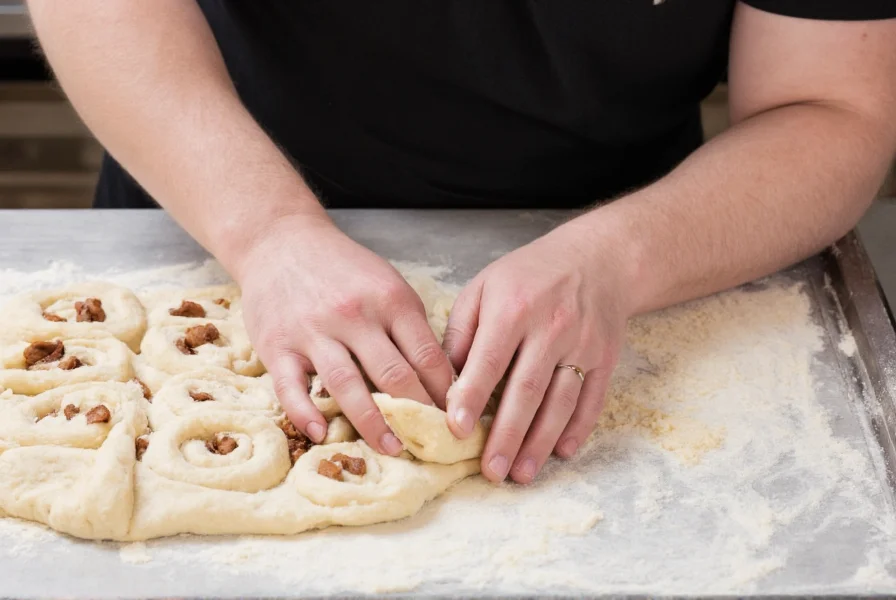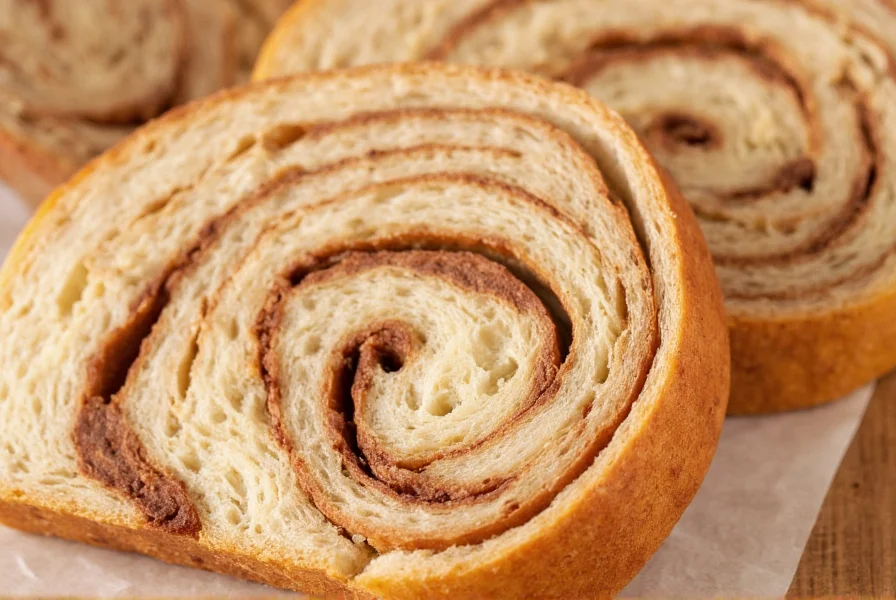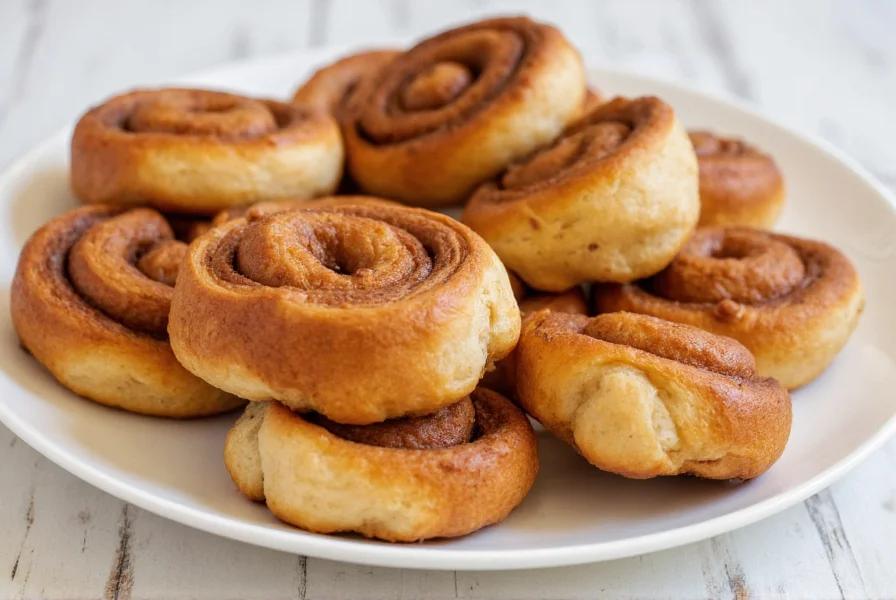Creating exceptional cinnamon swirls requires understanding the delicate balance between dough texture and filling distribution. Unlike traditional cinnamon rolls that are cut into individual portions before baking, cinnamon swirls maintain their loaf shape throughout the baking process, resulting in a stunning spiral pattern when sliced. This distinctive presentation makes them ideal for special occasions or as an impressive addition to brunch menus.
The Essential Components of Perfect Cinnamon Swirls
Mastering cinnamon swirls begins with understanding the critical elements that transform basic ingredients into an extraordinary treat. The foundation lies in developing a properly hydrated dough with optimal gluten development. A high-hydration dough (around 65-70%) creates the soft, tender crumb that characterizes professional-quality cinnamon swirl bread.
The cinnamon filling deserves equal attention. Many home bakers make the mistake of using only sugar and cinnamon, but adding melted butter creates a luxurious texture that prevents the filling from sinking to the bottom during baking. For the most vibrant swirl pattern, spread the filling evenly but leave a small border along one long edge of the dough rectangle to ensure a tight seal when rolling.

Step-by-Step Cinnamon Swirl Preparation
Follow this detailed process for consistently beautiful cinnamon swirls:
- Dough preparation: Combine 3 1/2 cups all-purpose flour, 1/4 cup sugar, 2 1/4 teaspoons active dry yeast, 1 teaspoon salt, 1 cup warm milk (110°F), and 1 large egg. Mix until a shaggy dough forms, then knead for 8-10 minutes until smooth and elastic.
- First rise: Place dough in a lightly oiled bowl, cover, and let rise at room temperature until doubled (about 1-1.5 hours).
- Filling preparation: Mix 1/2 cup softened butter, 1 cup packed brown sugar, 3 tablespoons ground cinnamon, and 1/4 teaspoon salt until well combined.
- Shaping: Roll risen dough into a 16x12 inch rectangle. Spread filling evenly, leaving a 1/2 inch border on one long side. Roll tightly from the filled edge, pinching the seam to seal.
- Second rise: Place seam-side down in a greased 9x5 inch loaf pan. Cover and let rise until nearly doubled (45-60 minutes).
- Baking: Bake at 350°F for 30-35 minutes until golden brown and internal temperature reaches 190°F.
Avoiding Common Cinnamon Swirl Mistakes
Even experienced bakers encounter challenges with cinnamon swirls. Understanding these pitfalls ensures consistent results:
| Common Problem | Why It Happens | Solution |
|---|---|---|
| Collapsed swirls after baking | Dough over-proofed or filling too wet | Reduce second rise time; use room temperature (not melted) butter in filling |
| Swirls don't hold shape when sliced | Cutting before fully cooled or dough too wet | Cool completely (2+ hours); adjust dough hydration if necessary |
| Uneven cinnamon distribution | Filling applied inconsistently | Use offset spatula for even spreading; measure filling components precisely |
Advanced Techniques for Exceptional Cinnamon Swirls
Elevate your cinnamon swirl game with these professional techniques:
The temperature factor: Dough temperature significantly impacts the final product. For optimal results, maintain dough temperature between 75-78°F during the first rise. This promotes even fermentation without over-proofing.
Filling variations: While classic cinnamon-sugar remains popular, consider incorporating complementary flavors. Adding 1/4 cup finely chopped pecans or walnuts to the filling creates delightful texture contrast. For a gourmet touch, mix 2 tablespoons of bourbon or rum into the melted butter before combining with sugar and cinnamon.
Swirl pattern perfection: To achieve the most defined swirl pattern, roll the dough tightly but gently. After placing in the loaf pan, refrigerate for 20 minutes before the final rise. This firms the dough slightly, helping maintain the spiral structure during baking.

Storage and Serving Recommendations
Cinnamon swirls taste best when fresh but maintain quality with proper storage. Allow the loaf to cool completely before wrapping in plastic film. For optimal freshness, consume within 2 days at room temperature. For longer storage, slice the loaf and freeze individual portions in airtight containers for up to 3 months.
When serving, lightly toast slices and spread with softened butter or cream cheese. For special occasions, prepare a simple glaze by mixing 1 cup powdered sugar with 2-3 tablespoons milk and 1/2 teaspoon vanilla extract. Drizzle over cooled slices for added sweetness.
Troubleshooting Your Cinnamon Swirl Results
Encountering issues with your cinnamon swirls? These solutions address common problems:
- Dense texture: Usually indicates under-proofed dough or insufficient kneading. Ensure dough passes the "windowpane test" before the first rise.
- Filling leaking: Apply filling to properly chilled dough and avoid overfilling. The border technique prevents leakage during baking.
- Pale crust: Brush the top with egg wash (1 egg beaten with 1 tablespoon water) before baking for a beautiful golden finish.
- Collapsed center: Often caused by underbaking. Use a thermometer to verify internal temperature reaches 190°F.
Frequently Asked Questions
What's the difference between cinnamon swirls and cinnamon rolls?
Cinnamon swirls are baked as a single loaf in a bread pan, creating a spiral pattern when sliced, while cinnamon rolls are individual portions cut before baking. Cinnamon swirls typically have a tighter, more uniform spiral pattern and a bread-like texture throughout, whereas cinnamon rolls often have a richer, cake-like consistency with more pronounced icing.
Can I make cinnamon swirls without yeast?
While traditional cinnamon swirls use yeast for their characteristic light texture, you can create a quick bread version using baking powder or baking soda as leavening agents. However, the texture will be denser and more cake-like rather than the soft, airy quality of yeast-raised swirls. For authentic results, yeast remains the preferred leavening method.
Why do my cinnamon swirls collapse after baking?
Collapse typically occurs when the dough is over-proofed before baking or when the swirls are removed from the oven too early. Ensure your dough has doubled but not tripled in size during the final rise, and verify the internal temperature reaches 190°F before removing from the oven. Allowing proper cooling time (at least 2 hours) before slicing also prevents structural collapse.
How can I make my cinnamon swirls more flavorful?
Enhance flavor by toasting your cinnamon before mixing it with sugar, which releases more aromatic compounds. Consider adding complementary spices like cardamom or nutmeg to the filling. Using dark brown sugar instead of light creates a richer caramel note. For professional results, incorporate a small amount of espresso powder (1/2 teaspoon) to deepen the overall flavor profile without making it taste like coffee.
What's the best way to slice cinnamon swirls without squishing them?
Use a serrated knife with a gentle sawing motion rather than pressing down. Ensure the loaf has cooled completely (at least 2 hours) before slicing. For cleanest results, chill the loaf in the refrigerator for 30 minutes before cutting. Professional bakers often use dental floss to slice delicate pastries—simply stretch floss between your hands and use a downward motion to cut through the bread without compression.











 浙公网安备
33010002000092号
浙公网安备
33010002000092号 浙B2-20120091-4
浙B2-20120091-4